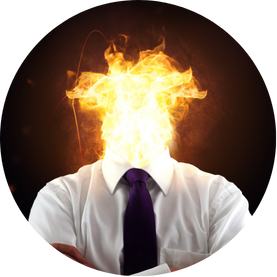Myth: Acupuncture is "just a placebo" and works only if you believe in it. The data is more nuanced. In orthopedic rehabilitation settings, acupuncture is associated with shorter hospital stays, less joint stiffness, and reduced chronic pain – even though treatment during anesthesia is sometimes debated, perioperative programs demonstrate real benefits for recovery and quality of life [1][2]. This is exciting for high performers: a quicker return to function, less medication, more energy.
Acupuncture is a therapy from Traditional Chinese Medicine, in which very fine needles are inserted to modulate pain pathways and activate the body's own analgesia. Modern research suggests effects in pain networks of the brain and neurohumoral responses, without the need to fully share the underlying philosophy [2]. It is important to clarify: visceral fatfat around the internal organs that promotes inflammation plays a role in metabolic health, but it is not the focus here; however, it explains why systemic inflammation can enhance pain. Acupuncture involves targeted stimulation at points to calm pain circuits, normalize muscle tone, and support recovery.
For migraines and tension-type headaches, recent reviews report clinically relevant pain relief – acupuncture is considered one of the more favorable indications within the evidence-based evaluation [3]. In cases of back pain, it supports the reduction of pain and functional limitations and may slow the risk of chronicity [4]. After surgeries, patients receiving integrative acupuncture experience shorter hospital stays, less chronic pain, improved quality of life, and better psychological stability – factors that contribute to measurable performance gains in daily life [1][2]. In fibromyalgia, the effects on pain, function, and depressive symptoms are statistically significant, albeit moderate; as a component in a multimodal program, acupuncture can be effectively utilized [5]. Case reports also suggest that early intervention allows for relevant improvements, such as quicker return to activities [6].
A retrospective cohort analysis from orthopedic rehabilitation compared standard rehabilitation with a program that integrated acupuncture and massage. The integrative group left the clinic faster, reported less joint stiffness and chronic pain, and showed better scores in quality of life and daily function, with lower anxiety and depression scores – indications that acupuncture can significantly accelerate recovery [1]. A recent review article on perioperative acupuncture places these findings within modern medicine: it describes reduced needs for analgesics and anesthetics, potentially improved gastric emptying, and overall better postoperative outcomes but also emphasizes implementation barriers such as reimbursement and training gaps – relevant for widespread application [2]. For fibromyalgia, a meta-analysis of systematic reviews summarizes that acupuncture reduces pain and improves function and depressive symptoms, though with small to moderate effect size and low evidence quality – advocating for its use as an add-on, rather than a standalone solution [5]. In addition, a randomized neuroimaging study for back pain is underway, which, alongside clinical endpoints, measures changes in brain activity; the goal: robust evidence to prevent chronicity and a mechanistic view of central pain processing [4].
- Migraines/tension-type headaches: Plan for 6–10 sessions over 4–6 weeks with a qualified therapist. Goal: reduce attack frequency and intensity and save on acute medications. Evidence: favorable outcomes for headaches compared to other types of pain [3].
- Back pain: Start early in the subacute phase (2–12 weeks). Combine acupuncture with active movement therapy (core stability, hip mobility) and sleep hygiene. Perspective: possible prevention of chronicity; neuroimaging studies aim to clarify the mechanisms in the brain [4].
- Postoperatively: Ask about integrative programs with acupuncture before orthopedic procedures. Goal: less pain, quicker discharge from the hospital, improved mood and function. Evidence from clinical practice and reviews supports shorter stays and less pain persistence [1][2].
- Fibromyalgia: Use acupuncture as a component in a multimodal plan (sleep, gentle endurance training, low-intensity strength, stress regulation). Manage expectations: noticeable, albeit moderate, improvements in pain, function, and depressive symptoms; early intervention can stabilize daily life more quickly [5][6].
- Performance transfer: Schedule sessions on low-training days and observe 24-hour recovery. Target metrics: less pain medication, better sleep quality, increased willingness to move – document these parameters to objectively track benefits (e.g., weekly comparisons of pain scale, step count, training load).
Acupuncture is evolving from a traditional art to a precisely integrated therapy – especially where quick functional gains matter. In the coming years, neuroimaging-supported studies and perioperative protocols will clarify who benefits the most and how medication use can be further reduced. For high performers, this represents an opportunity to accelerate recovery and systematically build resilience.
This health article was created with AI support and is intended to help people access current scientific health knowledge. It contributes to the democratization of science – however, it does not replace professional medical advice and may present individual details in a simplified or slightly inaccurate manner due to AI-generated content. HEARTPORT and its affiliates assume no liability for the accuracy, completeness, or applicability of the information provided.













